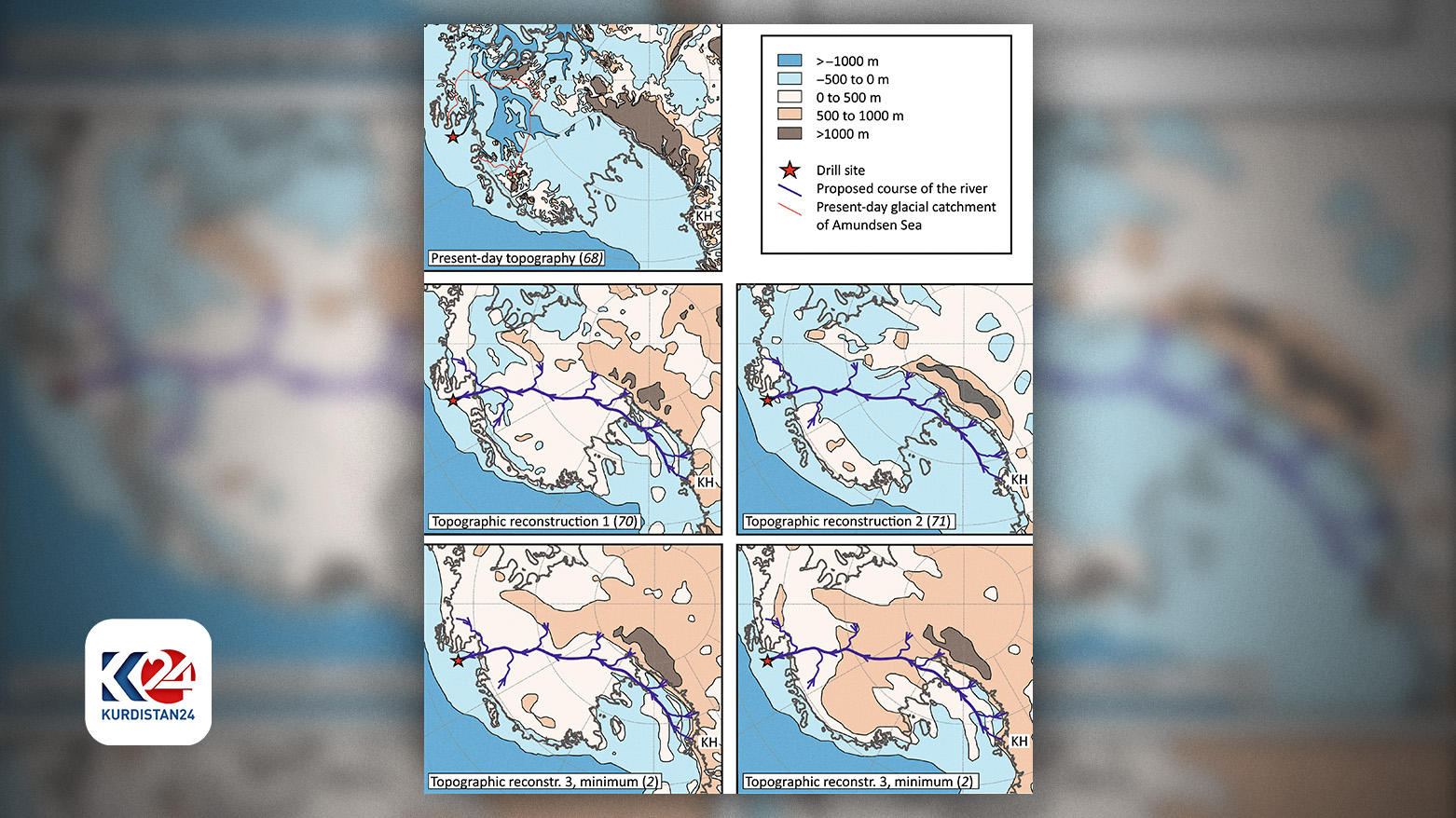Ancient river system discovered beneath West Antarctica's ice sheet
The findings suggest that Antarctica had a temperate climate about 34 million years ago, with dense forests and a vast network of rivers winding across the landscape.

ERBIL (Kurdistan 24) – Through excavations in the massive ice sheet of West Antarctica, a team of geologists has uncovered the remains of an ancient river system that flowed millions of years ago, stretching approximately 1,500 kilometers.
This discovery, published in the journal Science Advances, offers insights into Earth's history and the potential impacts of extreme climate change. Led by the Alfred Wegener Institute, located in Bremerhaven, Germany, the research team found evidence of this ancient river system by studying sediment samples from the Amundsen Sea.
The Amundsen Sea is an arm of the Southern Ocean off Marie Byrd Land in western Antarctica.
The findings suggest that Antarctica had a temperate climate about 34 million years ago, with dense forests and a vast network of rivers winding across the landscape.
This period, known as the middle to late Eocene, saw a dramatic cooling and a sharp decline in carbon dioxide levels, leading to the formation of the first glaciers on what was then an ice-free Earth.
Scientists have long puzzled over how this glaciation event occurred in Antarctica, now a continent dominated by ice.
Until about 100 million years ago, Antarctica was part of a massive supercontinent called Gondwana.

As Gondwana broke apart, Antarctica drifted south and became its own continent. Despite its movement to the South Pole, Antarctica experienced moderate climatic conditions until the end of the Eocene era, about 34 million years ago.
The new study involved an international team of researchers analyzing minerals and rock fragments in sediment samples from the Amundsen Sea, collected during an expedition aboard the Polarstern research icebreaker.
The research vessel Polarstern was first commissioned in 1982. Since then, the ship has completed more than 300 expeditions to the Arctic and Antarctic.
Surprisingly, most of these minerals and fragments originated not from West Antarctica, where they were found, but from the Trans-Antarctic Mountains on the other side of the continent, thousands of kilometers away.
A press release noted that the Trans-Antarctic Mountains have not always been tall; their elevation has been increasing since the late Eocene due to a geological feature known as the West Antarctic Rift System, which separates Antarctica into East and West.
The uplift of the Trans-Antarctic Mountains produced a significant amount of erosion debris, consisting of rocks and minerals transported long distances by the newly discovered river system. This debris was carried approximately 1,500 kilometers across the West Antarctic Rift System before being deposited in the Amundsen Sea.
Professor Cornelia Spiegel from the University of Bremen stated, “The existence of such a transcontinental river system shows that, unlike today, large parts of West Antarctica must lie above sea level as broad, flat coastal plains.”
The press release also indicated that at the end of the Eocene, West Antarctica had low terrain and was not cold enough for permanent ice sheets to form due to its low elevations. In contrast, East Antarctica's mountainous regions, with higher elevations and lower temperatures, were already beginning to see the formation of glaciers.